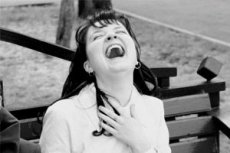Medical expert of the article
New publications
Hyperbullia
Last reviewed: 05.07.2025

All iLive content is medically reviewed or fact checked to ensure as much factual accuracy as possible.
We have strict sourcing guidelines and only link to reputable media sites, academic research institutions and, whenever possible, medically peer reviewed studies. Note that the numbers in parentheses ([1], [2], etc.) are clickable links to these studies.
If you feel that any of our content is inaccurate, out-of-date, or otherwise questionable, please select it and press Ctrl + Enter.

Hyperbulia is a volitional disorder in which there is an inadequate strengthening of various desires, as well as attempts to perform often unproductive activities. Basically, this pathology develops in manic states, and is also combined with other mental disorders (attention and thinking).
Causes hyperbulia
Hyperbulia is a component of manic syndrome, and in addition, it can be observed in various psychopathies, as well as acquired dementia. In addition, drug addiction and alcoholism can be the causes of the disease.
In children, the development of hyperbulia is usually associated with the consequences of early organic trauma to the central nervous system - MMD syndrome. This condition is also described in schizophrenic conditions, epilepsy, chronic-epidemic form of encephalitis, neurotic disorders, oligophrenia. In addition, it can be part of the so-called Kramer-Pollnov syndrome (in this case, there is a combination with regular violent movements, as well as gradually progressing dementia).
Risk factors
External and internal factors can hinder volitional actions in the case of a mental disorder. Among the latter, internal attitudes and a person's attitude are distinguished. External factors include the presence of the human factor, as well as time and space conditions.
Symptoms hyperbulia
In hyperbulia, the patient exhibits inadequate behavior, which, when combined with paranoid ideas, is expressed in excessive persistence, activity, and tenacity in defending one's own beliefs and views. In the event of obstacles or the unwillingness of other people to share these ideas (often quite absurd) or to recognize them, the activity of defending one's position only intensifies.
Activation of hyperbulia symptoms often occurs as a result of alcohol intoxication or in states when the mood is painfully elevated. Low fatigue of patients is also considered a characteristic sign of hyperbulia.
Diagnostics hyperbulia
In diagnosing non-verbal behavior, as well as volitional activity, the methods of reflexology and ethology are mainly used.
The ethological method consists of recording the so-called ethogram through the following communication channels – social, visual and tactile, as well as auditory and olfactory.
- Objectification of the visual channel is carried out by recording the dynamics of manipulations, poses, as well as gestures and facial expressions of the patient;
- auditory – audio and sonographic methods;
- social – by connecting systems between members of a social group or society (for example, through exchange or gift-giving, as well as by manifestations of dominance or aggressiveness);
- olfactory – study of pheromones;
- tactile - by identifying zones of contact with oneself and others, as well as the frequency of contact.
All channels can be recorded simultaneously, or each channel can be recorded separately.
Who to contact?
Treatment hyperbulia
Treatment is carried out in a complex manner - medications, as well as cognitive psychotherapy. Medicines should be selected only by a doctor, based on the patient's condition. For example, with excessive activity and excitement, which are noted in the case of hyperbulia, sedatives are prescribed.
The disease is treated with neuroleptic injections (Haloperidol in a dosage of 1-2 ml and Tizercin or Aminazin in a dosage of no more than 2-4 ml, which are administered intramuscularly), simultaneously with taking neuroleptic tablets (the same Aminazin in a dosage of 50-100 mg). Injections, if necessary, can be repeated after 1-2 hours. Azaleptin (Leponex) is also an effective sedative, which should be taken orally in a dosage of a maximum of 100-400 mg/day.
In case of manic syndrome, maintenance therapy is carried out using lithium preparations (the medicinal effect occurs on the 8-10th day of use).
Cognitive treatment involves eliminating the cause of the disease. Complete recovery requires an average of about 1 year of treatment with psychological correction and medication. The patient must then be under constant supervision of the attending physician to prevent recurrence of the pathology.
In case of a serious condition, the patient may be hospitalized – this is necessary in order to monitor him, preventing possible risky behavior.


 [
[